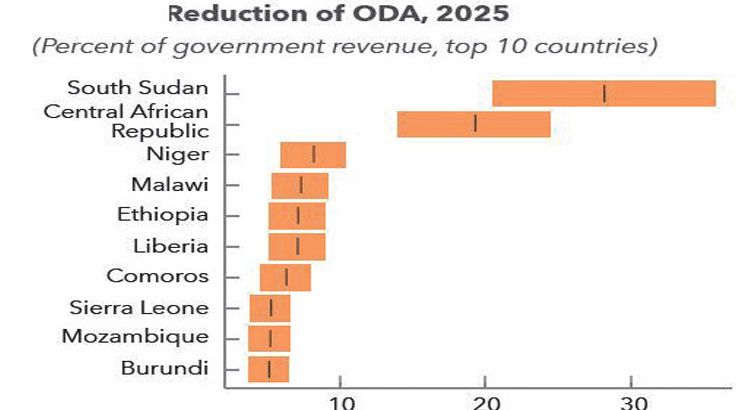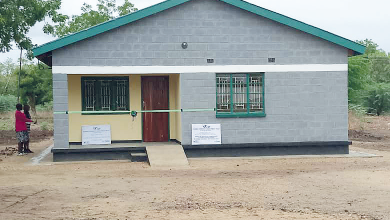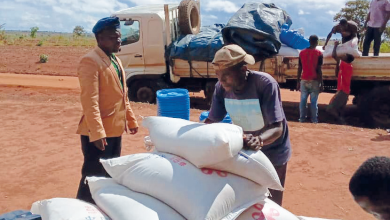Malawi to lose 9%aid this year—IMF
The International Monetary Fund (IMF) says Malawi could lose up to nine percent of government revenues following a decline in foreign assistance this year.
The global lender said this places Malawi as the fourth worst impacted economy after Central African Republic, South Sudan and Niger, whose potential aid cuts could surpass 10 percent of government revenues during the year.
In its October Regional Economic Outlook, the IMF said the reductions are both in budgetary assistance and off-budget support.

It said that governments have sought to reallocate budgetary resources to cushion these losses, but have limited fiscal space or technical capacity to rebuild fragmented, externally managed aid delivery systems.
Grant financing in the 2025/26 fiscal plan is expected to decline to 14.2 percent from 20.2 percent, a reflection of the decreasing landscape of donor financing.
In a written response on Tuesday, Mzuzu University economist Christopher Mbukwa observed that less external financial support increases financial strain for Malawi as around 25 percent of government revenue goes to paying debt.
He said: “Reduced aid coupled with high debt servicing will limit spending which, in turn, stifles economic growth and deepens poverty.
“Largely, the reduced official development assistance [ODA] flows will impact foreign exchange availability, which has been the reason why prices of key commodities such as fertiliser and fuel have remained high for an average Malawian.”
Compared to prior years, government spending is rising more rapidly than income as total government spending for 2025/26 fiscal year is projected to reach K8.1 trillion compared to revenues and grants amounting to K5.6 trillion, resulting in a budget deficit of K2.5 trillion.
As a result, this escalates the overall public debt, which was recorded at K16.2 trillion in September 2024, accounting for 86 percent of the gross domestic product and reflecting a 10 percent nominal increase from K14.7 trillion in 2023/24 fiscal year.
Ironically, debt servicing costs have increased from K1.4 trillion in 2024/25 fiscal year to K2.2 trillion in 2025/26 fiscal year, absorbing 50 percent of domestic revenue and 27 percent of total government expenditure.
Published United Nations Children’s Fund data show that between 2017 and 2023, ODA has remained the largest, averaging $1.6 billion (about K2.8 trillion) compared to other external inflows such as foreign direct investment, averaging $144 million (about K252 billion) and remittances at an average of $219 million (K383 billion).
In relative terms, ODA flows to Malawi constituted 82 percent of total external inflows in 2023, compared to FDI at 10 percent and remittances at eight percent, according to the UN.
International Trade Centre executive director Pamela Coke-Hamilton said ODA cuts that governments have announced in 2025 could amount to between a nine and 17 percent drop from last year’s ODA levels, raising concerns over the stability of the international trading system.
Ministry of Finance, Economic Planning and Development projected the financing of the national budget through tax revenues to increase to 53.6 percent in 2025/26 fiscal year as grant financing will reduce to 14.2 percent.
ODA flows play a crucial role in filling resource gaps in areas where the government is constrained and unable to meet the growing demand for essential services, especially in the health and education sector.





